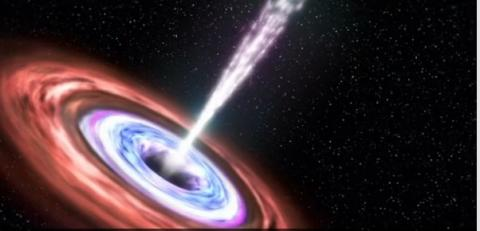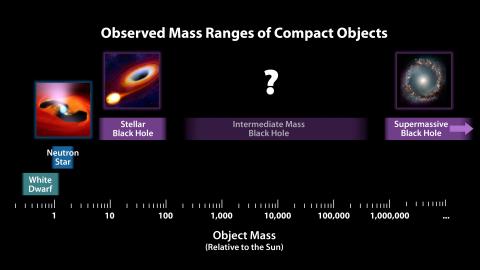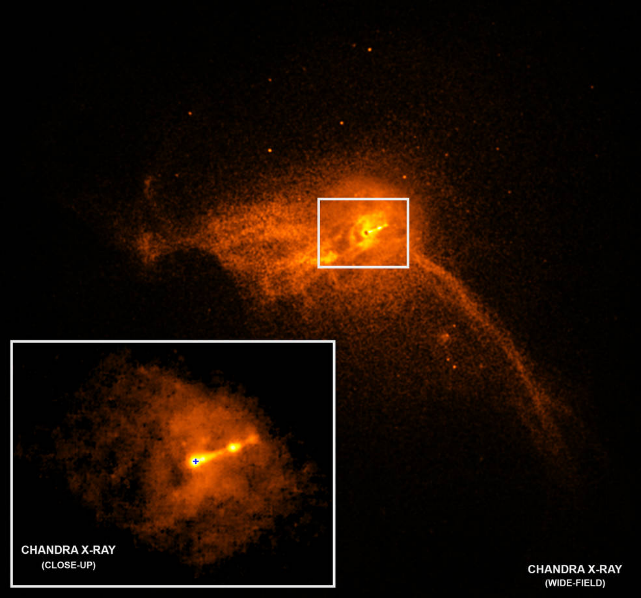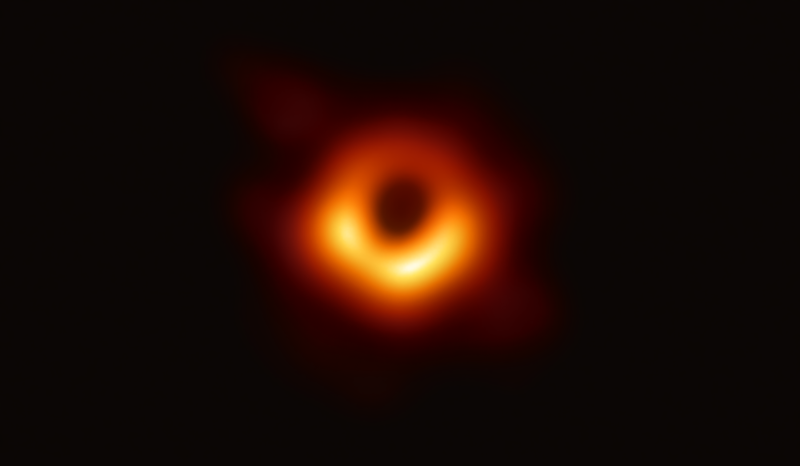The State-of-art Theorem and Detection Paradigms of Black Holes
Zhengping Yang
Beijing Bayi school international department, Beijing, China
zhengping.yang@bayims.cn
Abstract. The black hole has been a mystery and a source of detection motivation for the human race ever since our quest of the discovery and research of other space. In general, the black hole can be defined as a special time-space structure where the gravity is strong enough to trap the photons, i.e., the light will be unable to penetrate or escape from it. In this paper, the current theorem and state-of-art detection paradigms are discussed in detail. Primarily, the categories of the black holes are demonstrated. The four different types of black holes all present their unique features. the quest for black hole exploration has never ceased. It has achieved stunning breakthrough with the first ever photo taken of the black hole by NASA in 2019. The future analysis of black hole excavation and research has been brought a bright future, as technology and outer space exploration plans continue to evolve. These results shed light on guiding further exploration of cosmology as well as the astrophysics.
1. Introduction
A black hole can be defined as a special spacetime regime place that is capable of trapping all kinds of matters including photons due to its extremely large gravity potential. Following the concepts of general relativity theory, a black hole can be generated based on a focused and dense matter [1-3]. The event horizon is the line beyond which there is no escape. Despite having a significant impact on the outcome and circumstances of an object traversing it, general relativity states that it lacks any locally observable characteristics.
Black holes can be classified as stellar, moderate, supermassive, or small. Stellar death is the process that produces black holes the most frequently. The majority of dying stars will expand, and begin losing the inherit mass. After the cooling process, it will become the white dwarfs as a consequence. As for such a blazing thing, e.g., at least 10 to 20 times as massive as our sun, it will eventually collapse into either stellar-mass black holes or extremely dense neutron stars. Nevertheless, Michell's idea o is invalidated by modern physics. John Michell, an English astronomer and clergyman, made a brief argument for the existence of a body that was so massive. According to crude and simple calculations, which made the assumption of the same density as sun, one would arise when a star had a diameter that is 500 times greater than the Sun's and a surface escape velocity that is faster than the speed of light. These objects were referred described as dark stars by Michell. He was right to point out that one way to find such supermassive but non-radiating objects is to look at how their gravitational effects on nearby visible objects. Scholars' excitement over the potential that gigantic, invisible "black stars" might be hiding in plain sight subsided [4-8].
A black hole behaves in many ways like a perfect black body since it does not reflect light. Additionally, event horizons are predicted to emit Hawking radiation. For stellar black holes, it is about ~GK, making direct observation virtually difficult [9-11]. The unfathomably high gravity of a black hole will force anything that enters its "event horizon".
The introduction to this page explains the discoveries of black holes and covers every aspect of black holes. The remainder of the essay is structured as follows. The mathematical definition and theory of black holes will be covered in Section 2. In Section 3, various black hole categories will be introduced.
2. Theorem of black hole
For a black hole of mass M, there are some mathematical descriptions for it as following:
\( \frac{{Q^{2}}}{4π{ϵ_{0}}}+\frac{{c^{2}}{J^{2}}}{G{M^{2}}}≤G{M^{2}}{r_{+}}=\frac{GM}{{c^{2}}} \ \ \ (1) \)
\( {r_{ISCO}}=3{r_{s}}=\frac{6GM}{{c^{2}}}\ \ \ (2) \)
Here, M is the black hole's mass, Q denotes the total electric charge of the black hole, C denotes the constant value of the speed of light, and G denotes the gravitational constant. Extremal black holes are those that have the smallest feasible mass while still obeying this inequality. These solutions have what are known as "naked singularities", which are visible from the outside, and are therefore thought to be nonphysical. When such singularities emerge as a result of the gravitational collapse of actual stuff, the cosmic censorship hypothesis excludes their formation. The numerical simulations back this up.
|
Figure 1. Topology of the black hole [12]. |
A clock would appear to a distant observer than a clock farther away. An item falling into a black hole will appear to slow down as it approaches the event horizon and take an infinite amount of time to get there because of this gravitational time dilation effect. The phenomenon known as gravitational redshift occurs when all processes on this object slow down at the same time, making it appear redder and fainter to a fixed outside observer. The falling object eventually disappears until it is no longer visible. This process often occurs very quickly, with an object vanish from view in under a second. On the other hand, unharmed viewers entering a black hole are not affected by any of these phenomena as they pass through the event horizon. They cross the event horizon in accordance with their own clocks, which seem to tick normally to them. A black hole's event horizon is always spherical in topology while it is in equilibrium. The event horizon's geometry is precisely spherical for non-spinning black holes while it is oblate for revolving black holes. Figure 1 provides a sketch.
3. Category of the black holes
Black holes can be classified as stellar, moderate, supermassive, or small. Stellar death is the process that produces black holes the most frequently. The majority of dying stars will expand to produce white dwarfs. The largest of these hot objects, those at least 10 to 20 times as massive as our sun, will eventually collapse into either stellar-mass black holes or extremely dense neutron stars.
Supernovae are gigantic explosions that occur when big stars reach the end of their lives. Such a burst leaves the central core behind but launches star stuff into space. When the star was still alive, nuclear fusion produced a steady outward push that counteracted the gravitational attraction of the star's own mass. But because there are no longer any forces to counteract that gravity, the star core starts to collapse in on itself in the stellar remnants of a supernova. A black hole is created when a mass collapses into an incredibly small point. Black holes have extremely strong gravitational pulls because of how much mass they can fit into such a small space.
Einstein's general theory of relativity foresees supermassive black holes, which could have masses equivalent to billions of suns and are thought to reside at the cores of most galaxies. Sagittarius A* (pronounced "ay star"), a supermassive black hole is located at the core of the Milky Way.
The smallest black hole family members are currently only speculative. It's possible that these tiny dark vortices began to exist shortly after the big bang, or 13.7 billion years ago, and then quickly dissipated. Although there is currently some debate about the evidence, astronomers also believe that the cosmos contains a type of objects known as intermediate-mass black holes. The Einstein field equations of general relativity have an exact solution in the Kerr metric, despite the fact that finding accurate solutions to these extremely non-linear equations is quite challenging. The metrics have the following mathematical definitions:
\( \begin{array}{c} d{s^{2}}=-{c^{2}}d{τ^{2}}=-(1-\frac{{r_{s}}r}{Σ}){c^{2}}d{t^{2}}+\frac{Σ}{Δ}d{r^{2}} \\ +Σd{θ^{2}}+({r^{2}}+{a^{2}}+\frac{{r_{s}}r{a^{2}}}{Σ}{sin^{2}}{θ}){sin^{2}}{θd{ϕ^{2}}}-\frac{2{r_{s}}rasi{n^{2}}θ}{Σ}cdtdϕ\ \ \ (3) \end{array} \)
The cross product term in the aforementioned measure is an important aspect to note.
4. Detection scheme for black hole
Fig. 2 displays a typical diagram for the observation mass range. It is once believed that in order to photograph a black hole, one would need to construct a very huge space telescope. The EHT team accomplished this decades before its time by coordinating the operation of radio telescopes all around the world like a single device.
|
Figure 2. A sketch of the objective mass [13]. |
The Multiwavelength Working Group of the EHT organized a significant effort to observe the black hole using various light wavelengths in order to supplement the EHT results. This effort involved multiple NASA spacecraft. In support of this, NASA's Chandra X-ray Observatory, NuSTAR, and Neil Gehrels Swift Observatory space telescope projects, each tailored to a particular type of X-ray light, focused on the M87 black hole in April 2017.
To increase detection sensitivity, EHT records a large amount of data. During the April 2017 observation, each station recorded an astonishing 32Gbit/s of data, with eight stations recording about 3,500 terabytes of data over a five-day observation period (equivalent to 3.5 million movies, which would take hundreds of years to watch). EHT uses dedicated hard disks to record data and sends it back to the data centre for processing. Here, the researchers use supercomputers to correct the time lag between the wave’ arrival at different telescopes and cross-correlate all the data to achieve coherent signals. After nearly two years of post-processing and analysis of the data, the first black hole image was captured. EHT was able to take high-resolution polarized images of the black hole's shadow thanks to two things: EHT's high resolution, which allowed scientists to break up these dense regions; Second, the observation band is in the short millimetre band. As a consequence, it will definitely greatly weakens the influence of Faraday rotation effect.
In order to obtain the first black hole image (total intensity map) announced on 10 April 2019, cross-correlation data of the same polarization direction between stations was processed. In order to obtain the polarization image, it is more complicated and needs to process the cross-polarization signal between all stations. The difficulty is to calibrate the polarization parameters of the stations. The so-called station polarization parameter refers to the fact that when each station receives the polarization signal, it is expected to receive two "clean" polarization signals, but in fact, one polarization signal received will inevitably be "mixed" with the other polarization signal.
The immense gravity of supermassive black holes drives powerful jets and allows them to travel great distances at nearly the speed of light. The radiation from the M87 jet covers the whole spectrum, and its radiation characteristics in each electromagnetic wave segment are different. Collecting a "fingerprint" of this radiation can improve understanding of the properties of a black hole, but one challenge is that the signatures of radiation at these different frequencies tend to change over time.
By coordinating state-of-the-art ground-based and space-based telescopes, scientists from around the world simultaneously collected radiation across the entire electromagnetic spectrum during the EHT observations of M87, the most extensive simultaneous observation of the frequency coverage of a supermassive black hole and its jets to date.
A jet that extends from the centre of M87 outward by more than 1,000 light-years has previously been observed by NASA space telescopes. The jet's constituent particles burst out at high energy from a region near the event horizon at speeds close to the speed of light. The EHT was created in part to investigate the source of this jet and similar ones. Hubble astronomers identified HST-1 blob of materials in the jet in 1999, and it has since gone through an enigmatic cycle of brightening and dimming. Figs. 3 and 4 show the most recent black hole detection results; the former shows the selection regime and the later shows the outcomes of the reconstruction.
As a matter of fact, the first photographs do have plenty of implications for the cosmology and astrophysics. Primarily, it further proved the existence of black hole. In recent decades, despite the continuous development of theories about black holes, in actual observation, the existence of black holes has only just been confirmed, and these proofs are only indirect, e.g., observing the motion track of celestial bodies near black holes, gravitational lensing and other methods. EHT's direct imaging of black holes is a direct observation that further confirms the existence of black holes. This is a new milestone for astronomy. Apparently, it's also exciting for astronomy enthusiasts or those interested in the astronomical universe to see a black hole directly. In addition, it is a kind of proof-of-principle test existing theories results. There are numerous theories about black holes, but most of them are untestable because only the mass of the black hole can be observed and calculated. The accuracy of this imaging has reached 2,000 times that of the Hubble Space Telescope, and it can directly observe the event horizon, accretion disk, jet flow and other phenomena, which are closely related to the properties of black holes. This and subsequent observations can be used to test some of the existing theories. For example, the test of general relativity, black holes were first predicted by general relativity, and the test of black holes and the phenomena of black holes, is actually another test of whether general relativity needs to be modified. Black hole is the most closely connected celestial body with time and space, the study of black hole will make the human understanding of the universe further advance. Moreover, it breaks new ground. As mentioned above and stated earlier, the study of black holes can test many theories about cosmology, thus deepening our understanding of the universe. However, even with the accuracy of this observation, only large-scale phenomena such as event horizon, accretion disk and jet flow can be observed in the vicinity of the black hole, so only part of the theory can be tested. More sophisticated theories need to be tested by observing even more subtle phenomena of black holes, such as gravitational lensing. However, the improved accuracy of black hole imaging, coupled with the detection of gravitational waves in the past few years, has taken the observation of black holes to a new level. Therefore, the study of black holes will become normal, and a new field called "black hole astronomy" might be soon come!
|
Figure 3. The regime of EHT detection [14]. |
|
Figure 4. The reconstruction results of the black holes [14]. |
5. Limitations
Since a black hole only has a few intrinsic properties, the majority of knowledge about the matter that contributed to its genesis is lost. It seems that the only information that is conserved is the overall mass, charge, and angular momentum regardless of the kind of matter that enters a black hole. The EHT will then be able to widen the range of radio frequencies it employs to capture the event horizon as a result of new technological advancements. In a technique similar to the mirror in an optical telescope reflecting light to a single focus, high speed recording systems that collect radio waves from the black hole will send data to central places where they can be combined. EHT data volumes could surpass 100 petabytes with the addition of new observatories, greater data speeds, and other factors. This research will include looking into ways to use commercial technology advancements to efficiently record and convey such a massive amount of data. The ngEHT program will be able to use new, potent algorithms to transform the enormous amounts of data into photos and even movies by filling in the Earth-sized lens with numerous new geographic locations.
6. Conclusion
In summary, this paper investigates and discusses black holes from the basic concepts and theorem to the state-of-art applications. To be specific, the basic mathematical definitions and descriptions of the black holes are given primarily. Subsequently, the category of the black holes and the state-of-art detections detection scenario (EHT) are demonstrated. Eventually, the current limitations and perspective of future development and outlook of black holes investigation are proposed accordingly. Overall, these results offer a guideline for future research focusing on cosmology and black holes.
References
[1]. Pelat A, Gautier F, Conlon S C, et al. The acoustic black hole: A review of theory and applications. Journal of Sound and Vibration, 2020, 476: 115316.
[2]. Ashoorioon A, Rostami A, Firouzjaee J T. Examining the end of inflation with primordial black hole mass distribution and gravitational waves. Physical Review D, 2021, 103(12): 123512.
[3]. Tsallis C. Black hole entropy: a closer look. Entropy, 2019, 22(1): 17.
[4]. Curiel E. The many definitions of a black hole. Nature Astronomy, 2019, 3(1): 27-34.
[5]. Barceló C, Liberati S, Sonego S, et al. Black stars, not holes. Scientific American, 2009, 301(4): 38-45.
[6]. Vachaspati T. Black stars and gamma ray bursts. arXiv preprint arXiv:0706.1203, 2007.
[7]. Donald J. Some of These Days: Black Stars, Jazz Aesthetics, and Modernist Culture. Oxford University Press, 2015.
[8]. Vachaspati T. Gravitational waves, gamma ray bursts, and black stars. International Journal of Modern Physics D, 2016, 25(12): 1644025.
[9]. Greiner J, Cuby J G, McCaughrean M J. An unusually massive stellar black hole in the Galaxy. Nature, 2001, 414(6863): 522-525.
[10]. Casadioab R, Kuntzc I, Micud O. Binary mergers in bootstrapped Newtonian gravity: mass gap and black hole area law. arXiv preprint arXiv:2206.13588, 2022.
[11]. Mićić M, Irwin J A, Lin D. An Ultraluminous Supersoft Source in a Dwarf Galaxy of A85: An Intermediate-mass Black Hole Candidate. The Astrophysical Journal, 2022, 928(2): 117.
[12]. Information on: https://science.nasa.gov/astrophysics/focus-areas/black-holes.
[13]. Information on: https://www.space.com/15421-black-holes-facts-formation-discovery-sdcmp.html.
[14]. Information on: https://cosmosmagazine.com/space/supermassive-black-holes-shadow/.
Cite this article
Yang,Z. (2023). The State-of-art Theorem and Detection Paradigms of Black Holes. Theoretical and Natural Science,2,1-6.
Data availability
The datasets used and/or analyzed during the current study will be available from the authors upon reasonable request.
Disclaimer/Publisher's Note
The statements, opinions and data contained in all publications are solely those of the individual author(s) and contributor(s) and not of EWA Publishing and/or the editor(s). EWA Publishing and/or the editor(s) disclaim responsibility for any injury to people or property resulting from any ideas, methods, instructions or products referred to in the content.
About volume
Volume title: Proceedings of the International Conference on Computing Innovation and Applied Physics (CONF-CIAP 2022)
© 2024 by the author(s). Licensee EWA Publishing, Oxford, UK. This article is an open access article distributed under the terms and
conditions of the Creative Commons Attribution (CC BY) license. Authors who
publish this series agree to the following terms:
1. Authors retain copyright and grant the series right of first publication with the work simultaneously licensed under a Creative Commons
Attribution License that allows others to share the work with an acknowledgment of the work's authorship and initial publication in this
series.
2. Authors are able to enter into separate, additional contractual arrangements for the non-exclusive distribution of the series's published
version of the work (e.g., post it to an institutional repository or publish it in a book), with an acknowledgment of its initial
publication in this series.
3. Authors are permitted and encouraged to post their work online (e.g., in institutional repositories or on their website) prior to and
during the submission process, as it can lead to productive exchanges, as well as earlier and greater citation of published work (See
Open access policy for details).
References
[1]. Pelat A, Gautier F, Conlon S C, et al. The acoustic black hole: A review of theory and applications. Journal of Sound and Vibration, 2020, 476: 115316.
[2]. Ashoorioon A, Rostami A, Firouzjaee J T. Examining the end of inflation with primordial black hole mass distribution and gravitational waves. Physical Review D, 2021, 103(12): 123512.
[3]. Tsallis C. Black hole entropy: a closer look. Entropy, 2019, 22(1): 17.
[4]. Curiel E. The many definitions of a black hole. Nature Astronomy, 2019, 3(1): 27-34.
[5]. Barceló C, Liberati S, Sonego S, et al. Black stars, not holes. Scientific American, 2009, 301(4): 38-45.
[6]. Vachaspati T. Black stars and gamma ray bursts. arXiv preprint arXiv:0706.1203, 2007.
[7]. Donald J. Some of These Days: Black Stars, Jazz Aesthetics, and Modernist Culture. Oxford University Press, 2015.
[8]. Vachaspati T. Gravitational waves, gamma ray bursts, and black stars. International Journal of Modern Physics D, 2016, 25(12): 1644025.
[9]. Greiner J, Cuby J G, McCaughrean M J. An unusually massive stellar black hole in the Galaxy. Nature, 2001, 414(6863): 522-525.
[10]. Casadioab R, Kuntzc I, Micud O. Binary mergers in bootstrapped Newtonian gravity: mass gap and black hole area law. arXiv preprint arXiv:2206.13588, 2022.
[11]. Mićić M, Irwin J A, Lin D. An Ultraluminous Supersoft Source in a Dwarf Galaxy of A85: An Intermediate-mass Black Hole Candidate. The Astrophysical Journal, 2022, 928(2): 117.
[12]. Information on: https://science.nasa.gov/astrophysics/focus-areas/black-holes.
[13]. Information on: https://www.space.com/15421-black-holes-facts-formation-discovery-sdcmp.html.
[14]. Information on: https://cosmosmagazine.com/space/supermassive-black-holes-shadow/.













